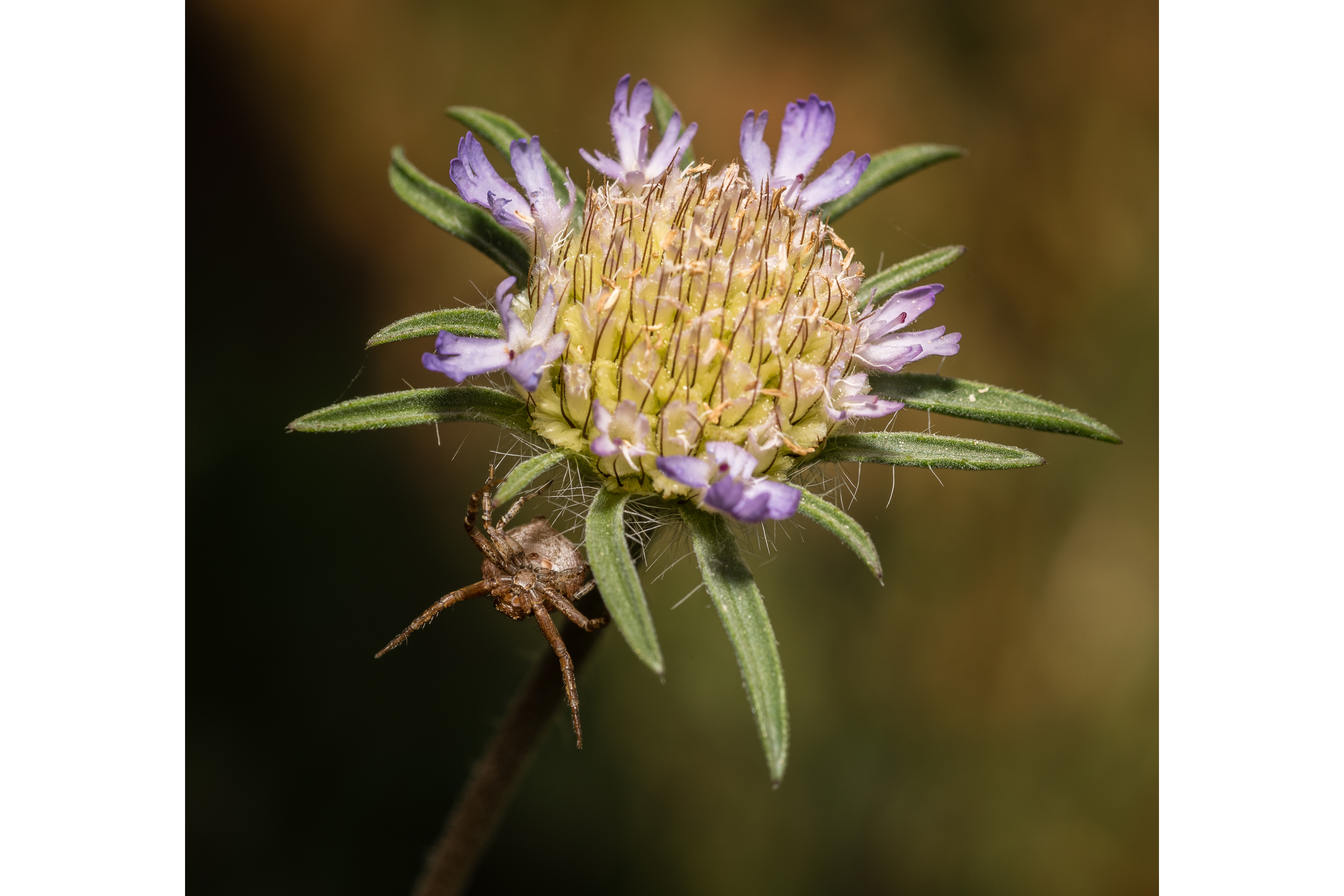Lomelosia rotata
(Lomelosia rotata)

Description
Scabiosa is a genus in the honeysuckle family (Caprifoliaceae) of flowering plants. Many of the species in this genus have common names that include the word scabious, but some plants commonly known as scabious are currently classified in related genera such as Knautia and Succisa; at least some of these were formerly placed in Scabiosa. Another common name for members of this genus is pincushion flowers. Some species of Scabiosa are annuals, others perennials. Some are herbaceous plants; others have woody rootstocks. The leaves of most species are somewhat hairy and partly divided into lobes, but a few are smooth and some species have simple leaves. The flowers are borne on inflorescences in the form of heads; each head contains many small florets, each floret cupped in a membranous, saucer-shaped bract. The calyx has five sepals in the form of awns almost as long as the petals. After the flowers have dropped, the calyces together with the bracts form a spiky ball that may be the reason for the "pincushion" common name. The calyx is persistent and remains as a crown on the fruit after it is shed. The corolla has four to five lobes fringing a narrow funnel with a furry throat, the funnel being somewhat longer than the lobes. The florets have four stamens each, set high in the tube, and sticking out. Each fruit has just one seed. In a few species the heads are sessile but in most species they are borne singly on a tall peduncle. Scabiosa species and varieties differ in the colours of their flowers, but most are soft lavender blue, lilac or creamy white. Members of this genus are native to Africa, Europe and Asia. Some species of Scabiosa, notably small scabious (S. columbaria) and Mediterranean sweet scabious (S. atropurpurea) have been developed into cultivars for gardeners. In 1782, a mysterious pale yellow scabious, called Scabiosa trenta, was described by Belsazar Hacquet, an Austrian physician, botanist, and mountaineer, in his work Plantae alpinae Carniolicae. It became a great source of inspiration for later botanists and mountaineers discovering the Julian Alps, especially Julius Kugy. The Austrian botanist Anton Kerner von Marilaun later proved Belsazar Hacquet had not found a new species, but a specimen of the already known submediterranean Cephalaria leucantha.
Taxonomic tree:







